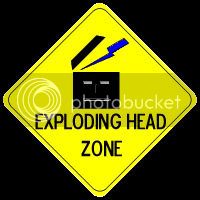RossKean
Well-known member
The final torque setting using the Yamaha tool is designated as 13 ft-lb. This is based upon a mechanical advantage afforded by the "official" spanner. I don't have one to measure but my estimate from pictures of the tool suggest that from the center of the steering stem to the center of the hole where the wrench is inserted is something around 2.3". If using a castellated socket, the effective mechanical advantage is going to be the radius of the nut itself - perhaps 0.7" or so. This suggests (to me) that there is around a 3X mechanical advantage using the spanner vs using a castellated socket.
Am I missing something here? (Maybe I need geometry lessons?) I have not seen a discussion on this before and was wondering if anyone is using a different torque specification (i.e. 39 ft-lb.) when using a castellated socket? Maybe its not all that critical but I am just starting to do some needed maintenance on my bike and want to make sure I am doing it right.
I was thinking about making a tool to tighten this nut but have to consider the critical dimensions or correctly compensate for torque value. By the way, does anyone have measurements for the official tool I could copy or a good photo of the spanner placed on a gridded paper? I found one in my search but it was hard to do precise measurements from it.
Thanks
Ross
Am I missing something here? (Maybe I need geometry lessons?) I have not seen a discussion on this before and was wondering if anyone is using a different torque specification (i.e. 39 ft-lb.) when using a castellated socket? Maybe its not all that critical but I am just starting to do some needed maintenance on my bike and want to make sure I am doing it right.
I was thinking about making a tool to tighten this nut but have to consider the critical dimensions or correctly compensate for torque value. By the way, does anyone have measurements for the official tool I could copy or a good photo of the spanner placed on a gridded paper? I found one in my search but it was hard to do precise measurements from it.
Thanks
Ross




